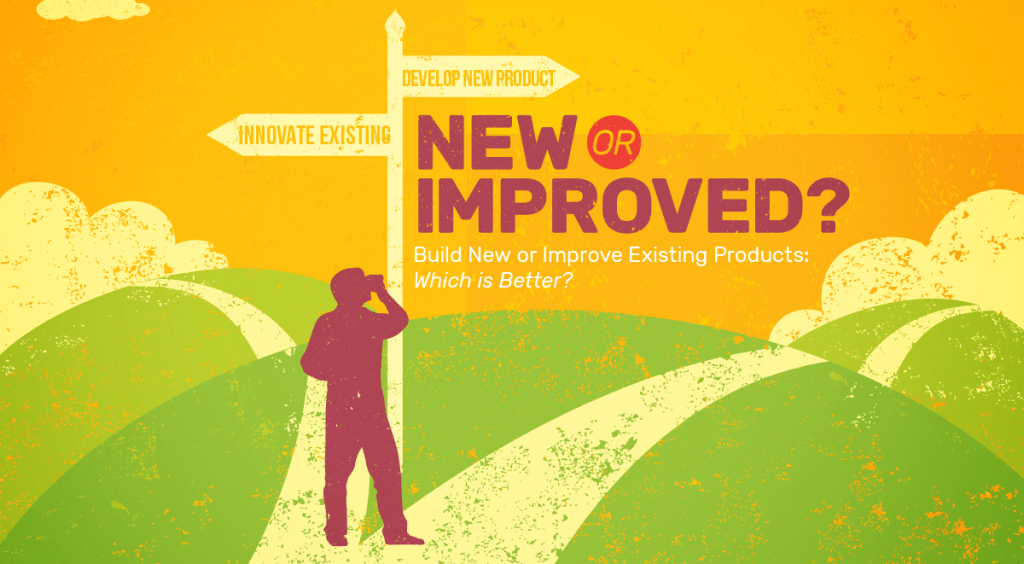
New Product Development Research
There are two key business opportunities in Product Development. First, you can improve an existing product. Or second, you can create a totally new product. Which is better for your business?
On the one hand, it may be less resource-intense to improve an existing product. You already have a customer base, a brand position and the market is familiar with you and your offerings. On the other hand, you may get more business growth by introducing a new product. Bringing new customers into the fold may pay dividends down the line in cross-selling your products and services.
So the correct answer is, probably both. But what is the ideal split between the two? What percent of my revenue should come from completely new products and what percent from product improvement?
There is no hard and fast rule about this, although you can probably find many different answers with a quick Internet search. Rather than focusing on these guidelines, it is more important to look at your individual situation. Some of the question you should consider are:
- Are the opportunities to improve your existing products? If your product have significant weaknesses, those are opportunities that are sitting right in front of you. Are your customers complaining or asking for changes in your product? Are you losing sales to your competitors? In many cases, this might be your first line of attack for product development.
- Where are you in the life cycle of your existing products? If you are close to retiring a product, you may not want to invest heavily in developing improvements because you’re not going to see the payback. If you just introduced your product, it may be too soon to introduce changes as you are still struggling with introduction challenges. On the other hand, if your product is in the sweet middle spot in its life, introducing improvements can boost sales and revenue, and may actually extend the product’s life expectancy.
- Will the new product leverage your existing brand and operations? If you are going to sell the new product to existing customers, you have a leg up. They are already familiar with you, your brand, and what you stand for. You may have existing sales relationships. Assuming that customers like you, using the same brand can be a huge cost-saving. Ditto with operations. Can you leverage your customer service infrastructure? What about online resources? Marketing costs for introducing a new product are significant, and leveraging your existing market position can create synergies and cost savings.
- Will you be entering a completely new market with your new product introduction? New market entry is difficult and costly. Starting from scratch with consumer awareness, educating the market about your offering and how it is different and better than anything else available can take a lot of time and resources. Product trial may be difficult to achieve. Product adoption may not come as quickly as expected. Depending on the sales cycle, it may be years before you can tell whether the launch was successful. If you’re not willing to make that investment, this might not be the way to go.
The one thing all of these questions have in common is this: you need information to decide whether introducing new products or improving existing products – or both – is the better strategy for your company. Information can come from internal sources, such as financials, sales, prospects, adoption rates, complaint information. Third party sources of information such as government data and product reviews can help you identify opportunities. Syndicated industry and market data can be especially helpful (especially if you are entering a new-to-you market) to help you evaluate potential demand. Finally, marketing research to evaluate customer interest in, appeal and likelihood to purchase are important in projecting potential demand for the product.
Product development – whether completely new or simply improved – is an important investment in your company’s future. Don’t count on averages or industry guidelines to tell you how you should invest your Product Development resources. Use information to build a custom strategy specific to your company, in your industry. By including an investment in information in your Product Development process, you can create competitive advantage that will improve sales, increase customer loyalty, and drive long-term business success.
Contact us today to learn more
